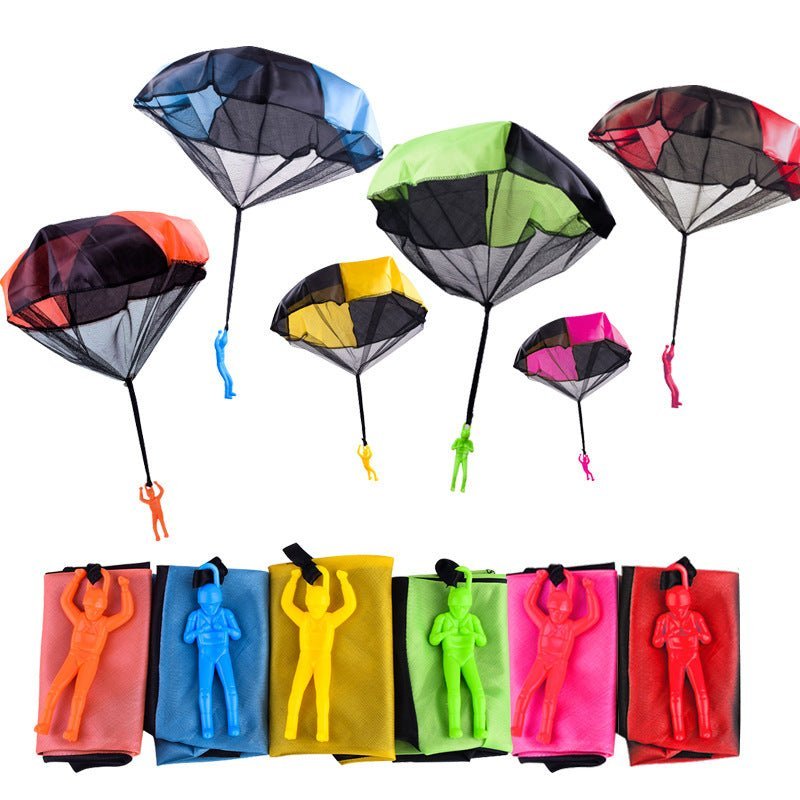
The Ultimate Guide to Parachute Guys: Drag and Gravity
STEM Fun with Parachute Guys
Exploring STEM with Our Parachute Guys: A Fun, Free Teaching Resource
At Lion Wholesale, we're always looking for ways to help you create memorable learning experiences for the kids in your life. Whether you're a parent, grandparent, teacher, or someone packing shoeboxes, we believe in the power of simple toys that spark big imaginations! That's why we’re excited to share a free teaching resource centered around our 4” Parachute Guys.
Check out our Sky Trooper Parachute Guys!This activity is a great way to introduce kids to basic STEM concepts—specifically, the science behind how parachutes work. And, the best part is, it's as fun as it is educational! You don’t need fancy equipment—just one of our parachute guys, a timer (or a phone with a stopwatch), and a little curiosity.
What You’ll Need:
- One (or more!) of our 4” Parachute Guys
- A timer or stopwatch
- A safe space to drop your parachute guy (a stairwell, balcony, or even just a chair)
How It Works:
The science of parachutes is all about drag and gravity. Gravity is what pulls everything toward the ground, and drag is the resistance that slows things down as they fall. Your parachute guy’s parachute increases drag, helping him float down slowly rather than just dropping like a stone.
Step-by-Step Instructions for a Fun Experiment:
-
Prepare for Launch
Find a spot where you can safely drop your parachute guy from a height. This could be from a staircase, balcony, or even standing on a chair. Make sure there's nothing fragile nearby! -
Predict the Outcome
Ask the kids to make a guess: How long do you think it will take for the parachute guy to land? Do you think he’ll fall faster or slower than if he didn’t have a parachute? -
The Drop
Hold the parachute guy up, fully open the parachute, and drop him! Start the timer the moment you let go and stop it as soon as he touches the ground. -
Measure and Record
Write down the time it took for the parachute guy to land. If you're using more than one parachute guy, drop them one at a time and record the results for each. -
Experiment with Heights
Try dropping the parachute guy from different heights—see how the time changes. Is it faster or slower from a higher spot? -
Discuss the Science
Once you’ve finished, talk about what happened. Why do you think the parachute slowed the fall? How did gravity and drag play a role?
What is Drag?
Drag is a type of air resistance—it's the force that acts against an object as it moves through the air. In simpler terms, drag is what slows things down when they're falling. Whenever an object (like a parachute) moves through the air, it bumps into air molecules, and these molecules push back against the object. The bigger the surface area of the object, the more air it has to push through, and the more drag it experiences.
How Does Drag Work with the Parachute?
In our parachute guy experiment, gravity is trying to pull the parachute guy straight down to the ground. But when you drop him, the parachute opens up and spreads out, creating a large surface area. That big surface catches a lot of air molecules, and those molecules create drag—this is what slows the parachute guy down, making him float gently to the ground rather than falling quickly.
The bigger the parachute (and the more air it catches), the more drag is created, and the slower the fall. Without the parachute, the little guy would drop much faster because his surface area is much smaller, so there's less drag acting against gravity.
Why Does Drag Matter in Real Life?
Drag is important in all kinds of real-world situations. Parachutes are used by skydivers, rescue workers, and even spacecraft to slow things down when they fall. When designing parachutes, engineers carefully calculate how much drag is needed to safely lower people or objects to the ground.
Even outside of parachutes, drag affects things like:
- Cars: Designers try to reduce drag to make cars more fuel-efficient.
- Airplanes: Planes are built to have just the right amount of drag to stay stable in the air while minimizing fuel use.
- Sports: Swimmers, runners, and cyclists wear sleek, tight clothing to reduce drag so they can move faster.
By playing with your parachute guy, you’re actually experimenting with a force that scientists and engineers deal with all the time!
Make It a Group Activity!
If you’re working with a group of kids, this activity can turn into a friendly competition. Who can predict the most accurate time? Who’s parachute guy stays in the air the longest?
You can also use this as a chance to discuss different types of parachutes, and how they are used in real life—from skydiving to space missions!
The Joy of Hands-On Learning
We love this activity because it’s simple, fun, and easy to set up. Plus, it offers a great way to mix playtime with learning. At Lion Wholesale, we believe that toys like our Parachute Guys do more than just bring smiles—they help kids explore the world around them, sparking curiosity and creativity.
And if you don’t have any of our parachute guys yet, no worries! You can grab a few from our collection—they make great additions to any shoebox or educational kit.